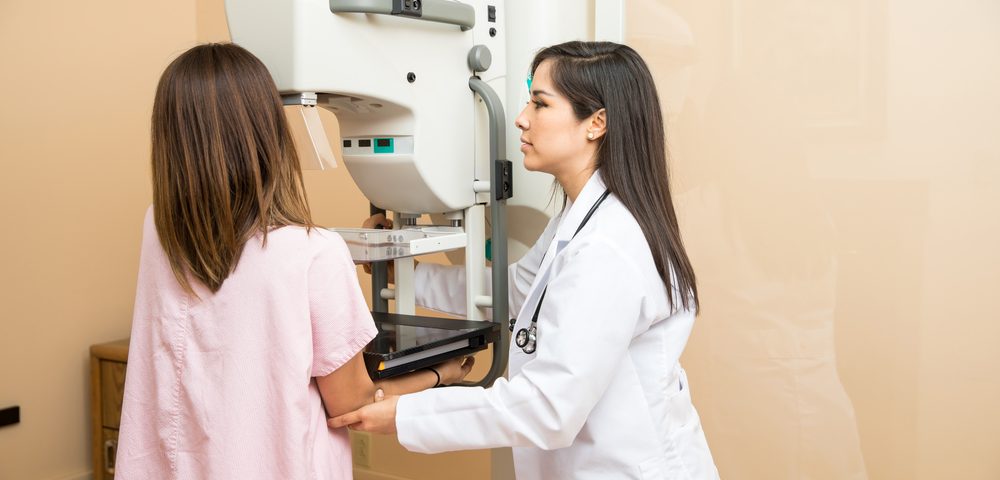Women under age 40 who plan to use assisted reproductive technology (ART) should first receive mammogram screenings to detect asymptomatic breast cancers that may potentially get worse with infertility treatments, a study suggests.
The analysis suggests that for every 1,000 women receiving ART, 13 show an undetected breast cancer in their pretreatment mammography. That is more than double the rate of cancer detection in women of the general population receiving mammography screening, the researchers said.
The study, “Outcomes of screening mammography in women less than 40 prior to fertility treatment: a retrospective pilot study,” was published in the journal Clinical Imaging.
With more people choosing to delay parenthood, the use of ART is becoming more common. Its use has doubled in the past decade, and current statistics indicate that approximately one of every 60 children born in the U.S. is conceived using ART.
The concern is that ART often requires exposure to high levels of artificial female hormones — particularly estradiol, a form of estrogen — to increase fertility. This is especially true in women undergoing ovarian stimulation for in vitro fertilization (IVF).
Some breast cancers are positive for the estrogen receptor and thrive in the presence of this female hormone. This raises concerns that infertility treatments may exacerbate the growth of yet undiagnosed breast cancers.
Despite this risk, there are no specific guidelines for breast cancer screening for women who are about to begin ART. Thus, the number of abnormal screening results detected in these women is currently unknown.
To fill in this knowledge gap, a team of researchers based at the University of California San Francisco (UCSF) analyzed the medical records of women under 40 who were planning to initiate ART and had mammogram screenings at the UCSF between March of 2017 and January 2020.
The research team included two sisters, Heather Greenwood, MD, and Eleni Greenwood, MD, MSc, whose mother passed away from breast cancer at age 35.
“Given our history, a lot of our personal interest in young women and early detection, it was so great to get to work on this project together,” one of the sisters said in a press release.
The pilot study included data from 80 women, mean age 37, of whom 77 (96%) had never given birth. Five women (6.3%) had an elevated breast cancer risk due to family history.
The team collected information from mammograms, including breast tissue density, mammogram findings based on the Breast Imaging Reporting and Data System (BI-RADS), and reasons for further testing when applicable. BI-RADS is a system that sorts mammogram findings into seven different categories, scored between 0 (inconclusive) and 6 (biopsy-proven breast cancer). A score greater than 4 suggests the presence of breast cancer.
The analysis found that 67 of the 80 women (84%) had a negative or benign mammogram result (BI-RADS 1 or 2), while the remaining 13 patients were called back for additional diagnostic imaging due to inconclusive results (BI-RADS 0).
Among the 13 women recalled and retested, four (31%) received a final assessment of BI-RADS 1 or 2, four (31%) were given BI-RADS 3 (probably benign) and recommended regular monitoring, and five (38%) had a biopsy. Two women classified as BI-RADS 3 also requested a breast biopsy.
The biopsy findings revealed that six out of the seven women (86%) had a benign diagnosis, including the two women with BI-RADS 3. However, a 39-year-old woman without a family history of breast cancer was diagnosed with ductal carcinoma in situ (DCIS) — a non-invasive cancer — and was successfully treated by a lumpectomy (breast-conserving surgery).
The overall number of cancers detected in this study was equivalent to 13 in a population of 1,000 women screened. The researchers pointed out that was “more than double” the rate of 5.1 cancers per 1,000 cases reported by the Breast Cancer Surveillance Consortium, and the 3.43 cancers per 1,000 cases reported by the National Mammography Database.
“In summary, our study suggests that in women less than 40 years old undergoing ART, screening mammography may identify asymptomatic breast malignancies,” the researchers said.
“Future research should include a trial with a larger number of patients to assess the need for screening, as well as its benefits and potential harms, in this growing patient population,” they added.

